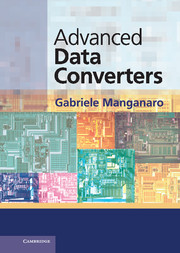5 - Trends in data conversion
Published online by Cambridge University Press: 05 January 2012
Summary
It has been shown in Chapters 1 and 2 that the variety in data-converter specifications spans multiple decades of sample rate, distortion and noise performance, power consumption, area, etc. Different architectures are used to address subsets of this wide and diverse space. Some of the recent developments in architectures and design techniques have been covered in Chapters 3 and 4 and reflect the fact that, as technology evolves and commercial applications drive demands, the performance of converters has been varying over time. Observing and understanding the evolutions occurring within the context of a specific converter architecture, or within a particular application space, have also been part of what Chapters 3 and 4 have attempted to offer.
Do these “local” dynamics result in “global” trends? Are there common denominators that transcend individual architectures and result in aggregate observable evolutions? Is it possible to predict what the “state of the art” in data converters may be in years to come? Answering these and other, closely related, questions is extremely difficult and one of the lessons of the past is certainly that it is a very error-prone process. Nevertheless, some brave researchers, with the aid of historical data and performance models, have tried to spot trends and draw conclusions.
This chapter will summarize some of the recently published trends. An independent confirmation of some of these trends will be given. Moreover, additional and original predictions will be introduced and discussed.
Information
- Type
- Chapter
- Information
- Advanced Data Converters , pp. 197 - 210Publisher: Cambridge University PressPrint publication year: 2011
